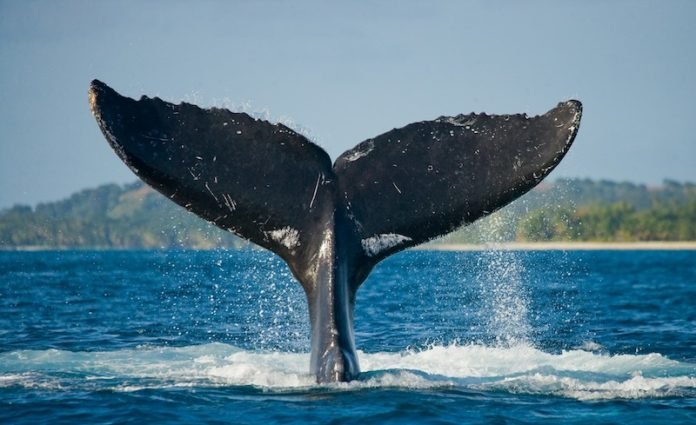
In the quiet waters of the past, Leonardo da Vinci discovered that sound travels far underwater, a principle that marine animals, especially whales, have relied on for millions of years. These creatures use sound to communicate, navigate, and survive in the ocean’s vast expanse.
However, the serene seas of the Renaissance are long gone, replaced by the bustling traffic of modern shipping vessels, creating a cacophony of noise pollution that poses a significant threat to marine life.
Scientists have been exploring how this increase in ocean noise affects whale migration, utilizing mathematical models to simulate the potential impacts.
The findings, published in the journal Movement Ecology, suggest that the effects of noise pollution on whale migration could range from mild to extreme, depending on the future levels of ocean noise.
Whales, which have evolved in relatively quiet oceans, now find themselves in a world where ambient noise levels have skyrocketed due to human activity.
Shipping, resource extraction, and offshore construction have contributed to a more than 20 decibel increase in ocean noise since 1950, equating to a hundredfold increase in background noise intensity.
This change has various negative effects on marine life, from increased stress and the potential for stranding events to challenges in finding food or mates.
The research proposes three main ways in which noise pollution could affect whales: reducing their communication range (solitude), causing stress and avoidance of noisy areas (avoidance), and impairing their ability to navigate (confusion).
These scenarios are not just speculative; they reflect real challenges that whales face in an increasingly noisy ocean.
To understand these impacts without subjecting whales to further stress, they turn to mathematical models. These models allow us to simulate whale migration under various noise conditions, providing insights that are otherwise difficult to obtain.
For instance, they can predict how a 50% increase in shipping traffic might alter migration patterns, offering a glimpse into the future of whale populations if current trends continue.
Our latest study expands our modeling approach to include all three noise impact scenarios—avoidance, confusion, and solitude. Although it’s challenging to measure the exact influence of each factor in the wild, our model allows us to adjust variables and observe potential outcomes.
By simulating different scenarios, they can predict migration paths, journey times, and the number of whale calls detectable by others.
They focused on the North Sea, a region with extensive data on shipping traffic and marine construction, to provide our simulated whales with a realistic environment. The model revealed that noise pollution could significantly alter whale migration behavior.
For example, if solitude is the primary effect, migration might slow down but would still occur. However, if avoidance or confusion plays a more significant role, migration could be severely disrupted or even fail entirely, with potentially catastrophic consequences for whale populations.
These findings underscore the importance of understanding and mitigating the impact of human activity on marine life.
As global trade and the push for renewable energy sources increase shipping traffic and offshore construction, they must strive for a balance that allows for economic development without compromising the well-being of marine wildlife.
Our next steps involve adapting the model to study whale migrations along the east coast of Australia, including the journey of humpback whales from the Southern Ocean to the Great Barrier Reef.
By continuing this research, they hope to provide valuable insights that can help guide policies and practices to ensure the sustainable coexistence of human and marine life.
The research findings can be found in Movement Ecology.
Copyright © 2024 Knowridge Science Report. All rights reserved.



